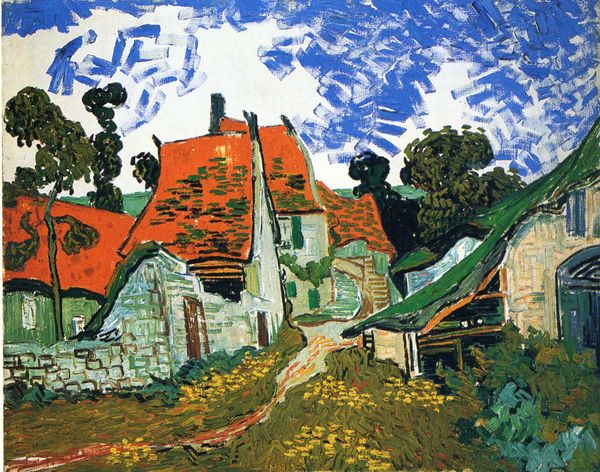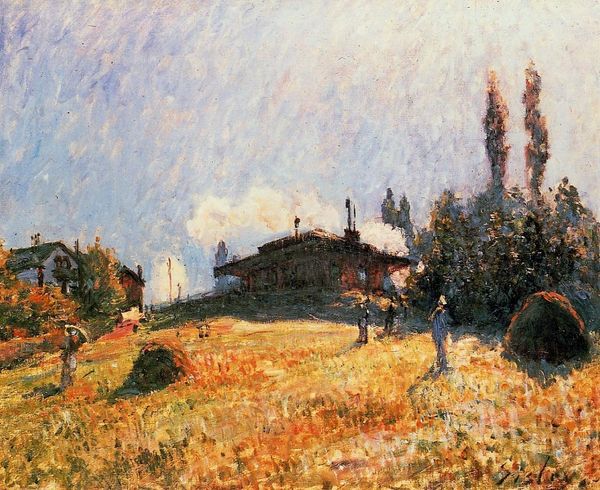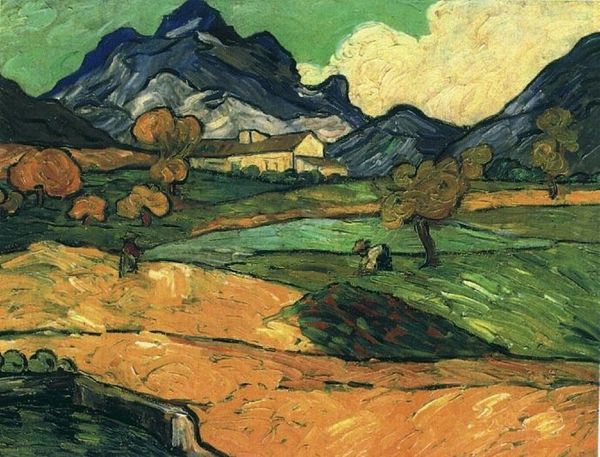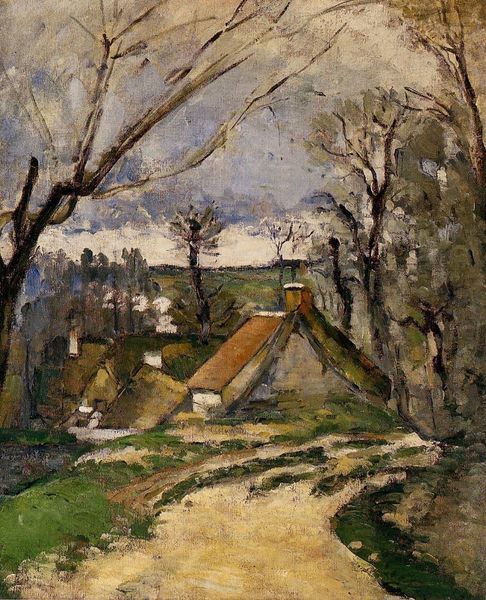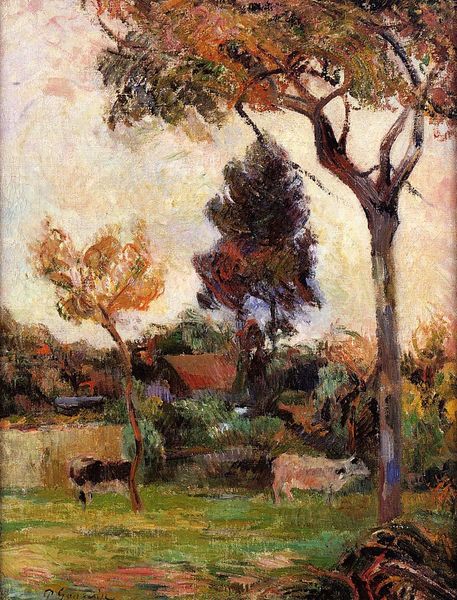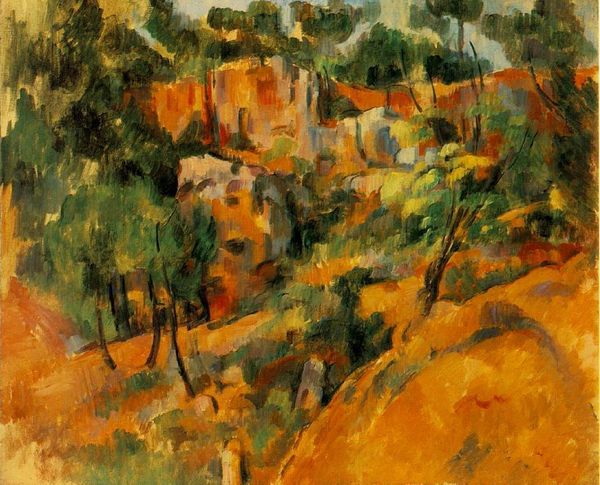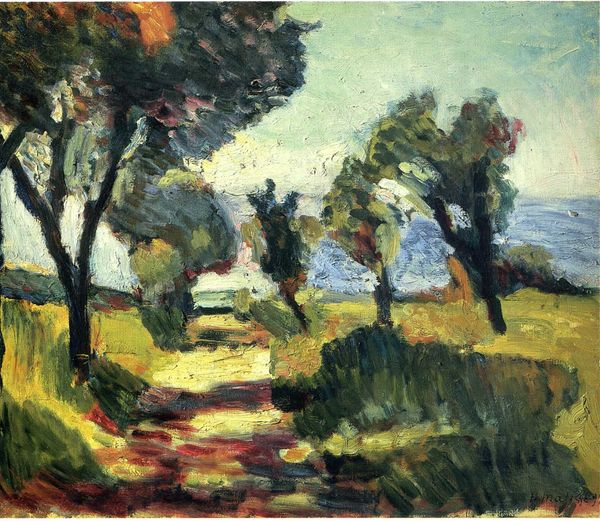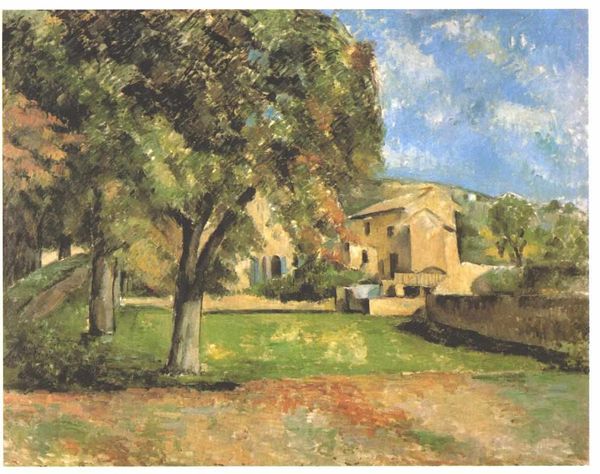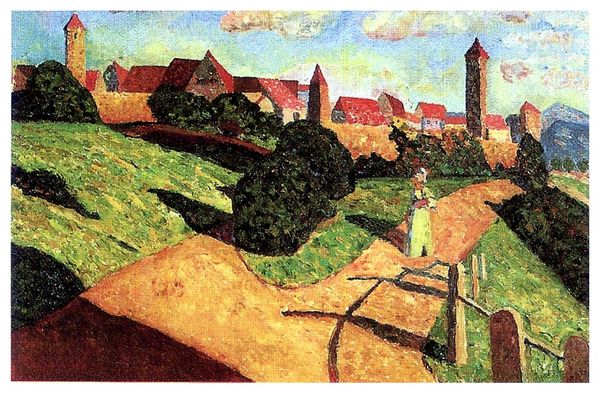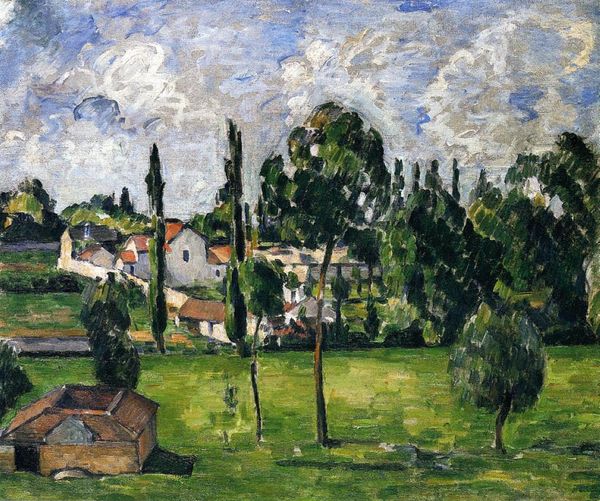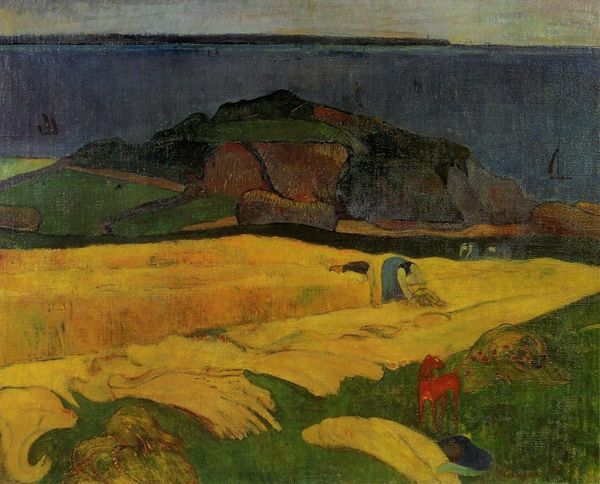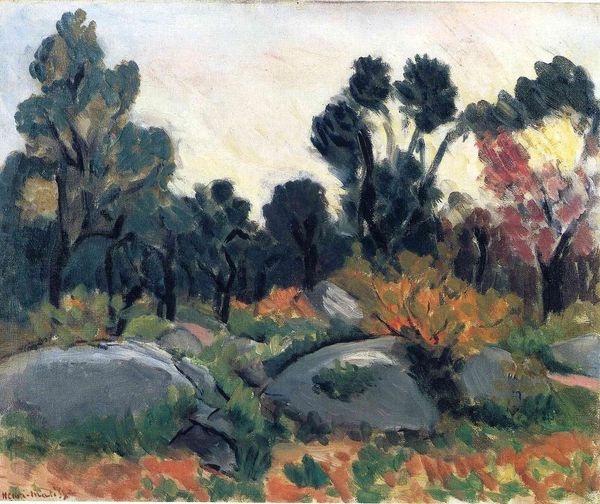
painting, oil-paint
#
painting
#
oil-paint
#
landscape
#
impressionist landscape
#
oil painting
#
symbolism
#
genre-painting
#
post-impressionism
Copyright: Public domain
Paul Gauguin painted this landscape of Les Alyscamps, an ancient Roman cemetery in Arles, France, with its rows of tombs transformed into an evocative promenade. Painted in 1888, this artwork exists within a complex colonial and artistic history. Gauguin, a leading Post-Impressionist, sought to move beyond the representational and delve into the symbolic and emotional. The three women dressed in black, perhaps mourners, add a human element, their presence a stark contrast to the vibrant, almost unnatural hues of the landscape. Gauguin’s perspective reflects the complex interplay between his own artistic journey and the cultural settings he encountered. Here, one can ponder how Gauguin navigates themes of mortality and memory, transforming the site into a space of reflection. The emotional resonance of the work, its ability to evoke contemplation and introspection, prompts us to consider our own place within broader cultural narratives.
Comments
No comments
Be the first to comment and join the conversation on the ultimate creative platform.

